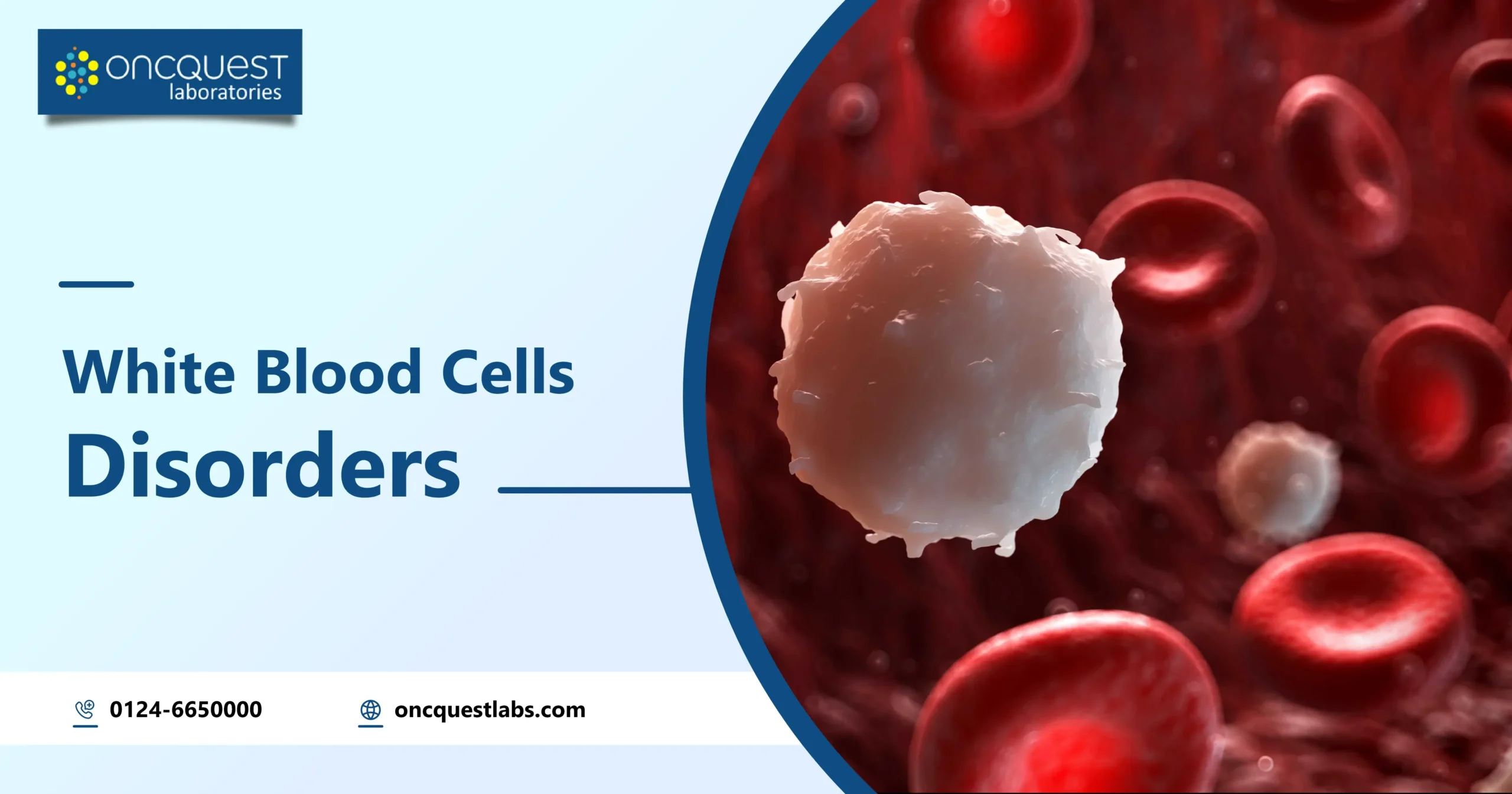The human body’s intricate defense system relies on various components, with white blood cells standing at the forefront of immune protection. These resilient cells play a pivotal role in safeguarding the body against infections, viruses, and other potential threats. However, like any complex system, the immune system can encounter disruptions, leading to disorders that affect white blood cells. In this blog, we’ll delve into the fascinating realm of white blood cell disorders, exploring their types, functions, and the impact they can have on overall health. Understanding these disorders is crucial for appreciating the intricate balance required for a robust immune response and navigating the challenges individuals may face when these vital defenders encounter disruptions. Join us on a journey into the world of white blood cell disorders and gain insights into their implications for human health.
Contents
What are White Blood Cells?
White blood cells, also known as leukocytes, are a crucial component of the body’s immune system. Unlike red blood cells, which primarily carry oxygen, white blood cells are responsible for defending the body against infections, bacteria, viruses, and other foreign invaders. They are produced in the bone marrow and circulate throughout the bloodstream, patrolling various tissues and organs.
There are different types of white blood cells, each with specific functions:
1. Neutrophils: Engage in phagocytosis, engulfing and destroying bacteria.
2. Lymphocytes: Play a key role in adaptive immunity, producing antibodies and coordinating immune responses.
3. Monocytes: Develop into macrophages, which engulf and digest pathogens and cellular debris.
4. Eosinophils: Involved in responses to allergies and parasitic infections.
5. Basophils: Release substances like histamine in allergic reactions.
Together, these cells form a dynamic defense network, working in concert to keep the body protected from harmful invaders. Understanding the functions of white blood cells is essential for comprehending the body’s ability to maintain health and combat infections.
Common White Blood Cell Disorders
Several common disorders can affect white blood cells, compromising the body’s immune response. Here are some notable white blood cell disorders:
1. Leukemia: A type of cancer that originates in the bone marrow, causing abnormal production of white blood cells. Leukemia can be acute or chronic and is characterized by an excessive accumulation of immature white blood cells.
2. Lymphoma: A cancer that begins in the lymphatic system, impacting lymphocytes (a type of white blood cell). Hodgkin’s lymphoma and non-Hodgkin’s lymphoma are the two main types, distinguished by the presence of specific cells.
3. Agranulocytosis: This condition is characterized by a severe decrease in the number of granulocytes (including neutrophils) in the blood. It can result from certain medications, infections, or other underlying conditions, leaving the individual susceptible to severe infections.
4. Neutropenia: A condition where there is a low count of neutrophils, a type of white blood cell crucial for fighting bacterial infections. Neutropenia can be congenital or acquired and may result from various factors, including medications or underlying health conditions.
5. Myelodysplastic Syndromes (MDS): A group of disorders characterized by ineffective production of blood cells in the bone marrow. MDS can lead to low levels of different types of blood cells, including white blood cells.
Understanding these disorders is vital for early detection, diagnosis, and appropriate management. Each condition presents unique challenges, and treatment approaches may involve chemotherapy, immunotherapy, or stem cell transplantation, depending on the specific disorder and its severity. Regular medical check-ups and awareness of symptoms can contribute to timely intervention and improved outcomes.
Diagnostic Methods
Diagnostic methods for white blood cell disorders involve various tests to assess the quantity and functionality of white blood cells. Here are key diagnostic methods:
1. Complete Blood Count (CBC): This common blood test provides information about the number of white blood cells, red blood cells, and platelets in the bloodstream. Abnormalities in white blood cell counts can indicate potential disorders.
2. Differential Blood Count: This test breaks down the types of white blood cells present, including neutrophils, lymphocytes, monocytes, eosinophils, and basophils. It helps identify specific patterns that may suggest certain disorders.
3. Blood Smear: A microscopic examination of a stained blood sample allows for a closer look at the size, shape, and characteristics of white blood cells. This can reveal abnormalities and assist in diagnosing specific conditions.
4. Flow Cytometry: This technique analyzes the physical and chemical characteristics of individual cells, providing detailed information about the types and proportions of different white blood cells. It is particularly useful for identifying and classifying various blood disorders.
5. Bone Marrow Biopsy: In some cases, a sample of bone marrow may be taken for examination. This invasive procedure helps assess the production and maturation of blood cells in the bone marrow, aiding in the diagnosis of disorders such as leukemia and myelodysplastic syndromes.
These diagnostic methods play a crucial role in identifying white blood cell disorders, guiding healthcare professionals toward appropriate treatment plans. Depending on the specific symptoms and suspected conditions, one or a combination of these tests may be recommended to gain a comprehensive understanding of the individual’s blood profile. Regular monitoring through these diagnostic tools is essential for managing and adapting treatment strategies as needed.
Treatment Options
Treatment options for white blood cell disorders depend on the specific condition, its severity, and individual factors. Here are common approaches:
1. Medications:
- Chemotherapy: Used in conditions like leukemia to target and eliminate rapidly dividing abnormal cells.
- Immunosuppressive drugs: Employed in disorders where the immune system is overactive, such as certain types of vasculitis.
- Antibiotics and antifungals: Administered to prevent or treat infections, particularly in cases of low white blood cell counts.
2. Stem Cell Transplant: In cases of severe disorders like leukemia or certain immune system deficiencies, a stem cell transplant may be considered. This involves replacing damaged or diseased bone marrow with healthy stem cells.
3. Biological Therapy (Immunotherapy): Utilizes substances that stimulate or suppress the immune system, aiding in the treatment of conditions like lymphoma or certain autoimmune disorders.
4. Supportive Care: Management of symptoms and complications, such as blood transfusions for low blood cell counts or growth factors to stimulate white blood cell production.
5. Splenectomy: In some cases of certain white blood cell disorders, surgical removal of the spleen may be recommended to address complications like an enlarged spleen.
6. Targeted Therapies: Precision medicines that specifically target certain molecules involved in the growth and survival of abnormal cells. These are increasingly used in the treatment of various cancers, including certain types of leukemia and lymphoma.
Treatment plans are personalized based on the type of disorder, the individual’s overall health, and the specific characteristics of the condition. Regular monitoring and follow-ups are crucial to assess treatment effectiveness and manage potential side effects. It’s essential for individuals to work closely with their healthcare team to determine the most appropriate and effective treatment strategy for their specific white blood cell disorder.
Prevention and Outlook
Prevention
1. Maintaining a Healthy Lifestyle: Regular exercise, a balanced diet, and adequate sleep contribute to overall well-being, supporting a robust immune system.
2. Hygiene Practices: Proper handwashing and hygiene help reduce the risk of infections, supporting the health of white blood cells.
3. Vaccinations: Immunizations protect against specific infections, reducing the likelihood of illnesses that could impact white blood cell function.
4. Avoiding Harmful Exposures: Minimizing exposure to environmental toxins and harmful substances can help protect the immune system.
Outlook
1. Early Detection and Treatment: Timely diagnosis and intervention significantly improve outcomes for many white blood cell disorders.
2. Advancements in Treatment: Ongoing research leads to new and improved treatment options, enhancing the prognosis for individuals with various disorders.
3. Lifestyle Management: Adopting a healthy lifestyle, following medical recommendations, and managing stress contribute to better overall health outcomes.
4. Individualized Care: Advances in personalized medicine allow for tailored treatment plans based on an individual’s unique characteristics, optimizing effectiveness.
5. Regular Monitoring: Routine check-ups and monitoring of blood counts help identify and address changes in the early stages, improving the management of white blood cell disorders.
While prevention strategies focus on overall health and minimizing risks, the outlook for individuals with white blood cell disorders is increasingly positive with advancements in medical understanding and treatment options. A collaborative approach between individuals and their healthcare teams, coupled with ongoing research, continues to shape a more optimistic future for those facing these conditions.
Conclusion
In summary, white blood cell disorders demand attention for their impact on immune health. Early detection through diagnostic methods facilitates tailored treatments, ranging from medications to advanced therapies. Continuous research fosters optimism, promising improved outcomes and personalized care. Prevention strategies, emphasizing a healthy lifestyle and vaccinations, complement medical advancements. A collaborative approach between individuals and healthcare professionals, coupled with ongoing innovations, shapes a more hopeful future. With awareness, timely intervention, and a commitment to overall well-being, we navigate the complexities of white blood cell disorders towards better health and resilience.


![Blood Test for Hair Loss [Male/Female] Blood Test for Hair Loss](https://oncquest-blog.s3.ap-south-1.amazonaws.com/blog/wp-content/uploads/2023/12/12044200/Blood-Test-for-Hair-Loss.webp)


